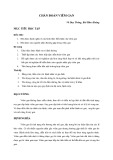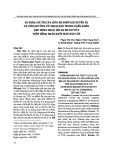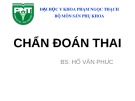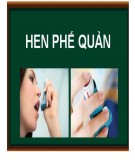
Các loại gãy xa xương quay đặc biệt
(Radius, Distal Fractures)
Colles fracture
In 1813, Abraham Colles described the Colles fracture, which is reported to be the
most common distal radial fracture. The injury is usually produced by a fall onto
an outstretched hand (FOOSH) mechanism with the wrist in dorsiflexion. The
impact produces a transverse fracture in the distal 2-3 cm of the radial articular
surface. The fracture is dorsally displaced and may be comminuted. The fracture
pattern is often described as a silver or dinner-fork deformity. The fracture
fragments are usually impacted and comminuted along the dorsal aspect; the
fracture can extend into the epiphysis to involve the distal radiocarpal joint or the
distal radioulnar joint.
Resnick noted that 50-60% of Colles fracture cases are associated with an ulnar
styloid fracture.An associated ulnar styloid fracture should prompt an investigation
for tears of the TFC. The TFC extends from the rim of the sigmoid notch of the
radius to the ulnar styloid and is thought to stabilize the distal radioulnar joint

AO Classification of Colles Fractures
A Extra-articular
B Partial articular
C Complete articular
1 Simple articular and metaphyseal fracture
2 Simple articular with complex metaphyseal fracture
3 Complex articular and metaphyseal fracture

Smith fracture
Robert Smith described the Smith fracture in 1847. An impact to the dorsum of the
hand or a hyperflexion or hypersupination injury is thought to be the cause. A
Smith fracture is usually called a reverse Colles fracture because the distal
fragment is displaced volarly. It is often described as a garden-spade deformity.
The ulnar head can be displaced dorsally
Thomas Classification of Smith Fractures
I Most stable, extra-articular, transverse distal radial fracture with palmar and
proximal displacement
II Barton type, palmar-lip fracture of the distal radius with dislocation of the
carpus
III Unstable, oblique, juxta-articular fracture of the distal radius and tilted palmar

Barton fracture
John Rhea Barton characterized the Barton fracture in 1838.This fracture involves
a dorsal rim injury of the distal portion of the radius. The volar Barton fracture is
thought to occur with the same mechanism as the Smith fracture, with more force
and loading on the wrist. The dorsal Barton fracture is caused by a fall on an
extended and pronated wrist, increasing carpal compression force on the dorsal
rim. The salient feature is a subluxation of the wrist in this die-punch injury.
The Barton fracture involves either the palmar or dorsal radial rim, and the
mechanism is intra-articular. By definition, this fracture has some degree of carpal
displacement, which distinguishes it from a Colles or Smith fracture. The palmar
variety is more common than the dorsal type



























